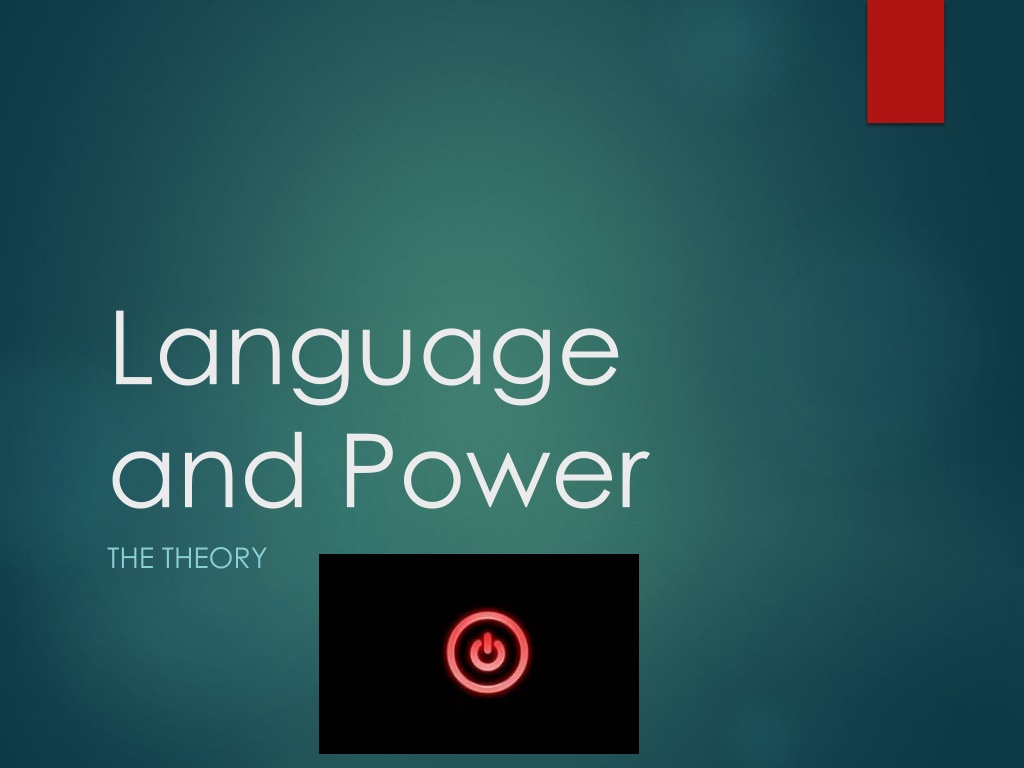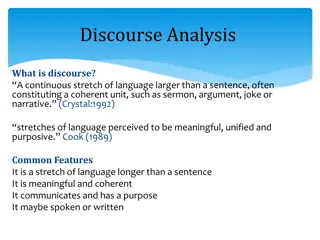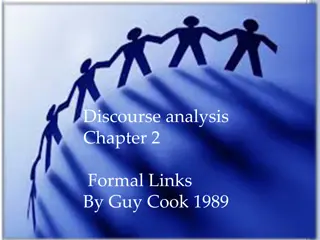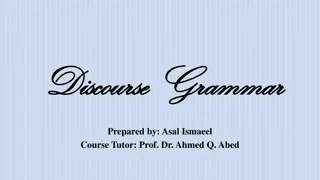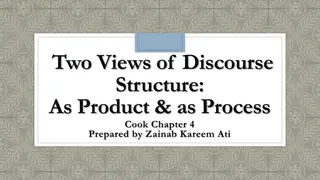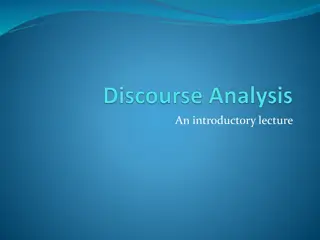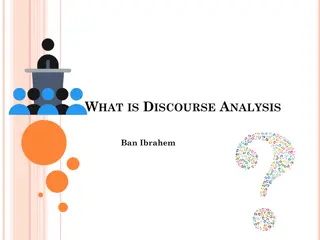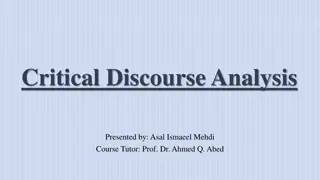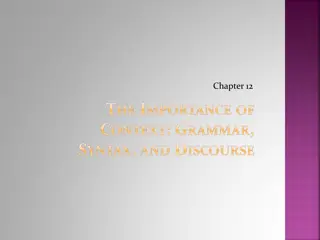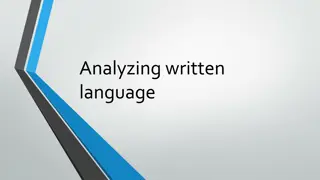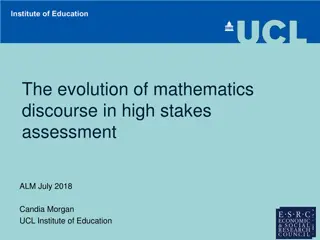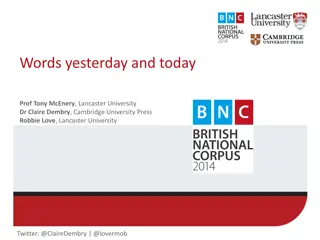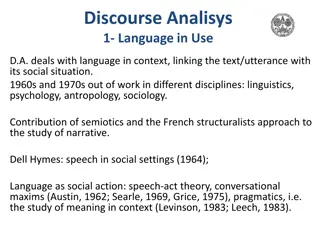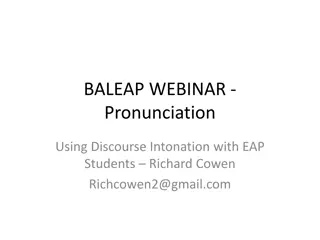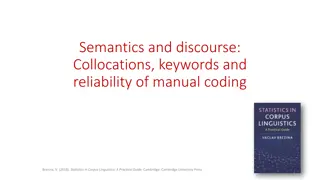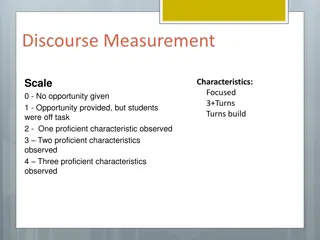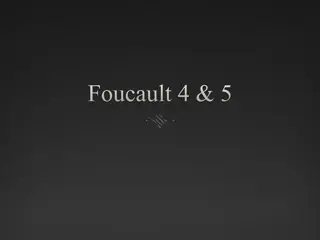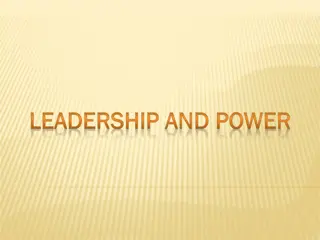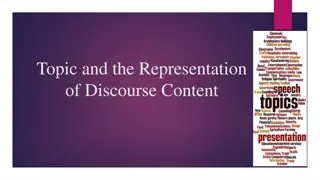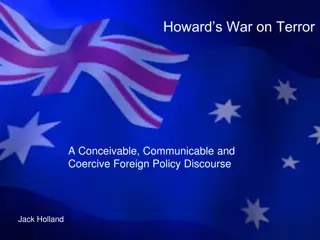Language, Power, and Influence in Discourse
This comprehensive content delves into various theories and concepts related to language, power, and discourse, covering topics such as instrumental vs. influential power, discourse analysis, and the role of humor and politeness in communication. It discusses how language is used to convey authority and persuasion in different contexts, from legal and political settings to personal and social interactions. Through examples and theories presented by experts like Wareing, Holmes, and Morreal, the content sheds light on the intricate ways language shapes power dynamics and influences human interactions.
Download Presentation

Please find below an Image/Link to download the presentation.
The content on the website is provided AS IS for your information and personal use only. It may not be sold, licensed, or shared on other websites without obtaining consent from the author.If you encounter any issues during the download, it is possible that the publisher has removed the file from their server.
You are allowed to download the files provided on this website for personal or commercial use, subject to the condition that they are used lawfully. All files are the property of their respective owners.
The content on the website is provided AS IS for your information and personal use only. It may not be sold, licensed, or shared on other websites without obtaining consent from the author.
E N D
Presentation Transcript
Language and Power THE THEORY
Wareing Political = Legal e.g. Police, Judge, Barrister Personal = Occupational e.g. Doctor, Teacher Social Group = Friends and family, class
Instrumental vs. Influential Instrumental = enforces authority imposed by the law, schools, exam boards Influential = persuasive power.
Power in and Behind Discourse Power within discourse = features used to convey power Power behind discourse = who? what? why?
Holmes Managers favour mitigated imperatives. E.g. Please could you hand in the work tomorrow afternoon rather than Hand in the work tomorrow!
Fairclough Synthetic Personalisation = gives an audience, who are treated en masse, the impression of being considered as individuals. This is created through the use of you as a second person pronoun.
Morreal Humour can be used as a powerful strategy. There are 3 humour theories: 1) Relief theory laughter is when psychological tension is reduced; relieving the tension caused by one s fears 2) Superiority theory when people laugh at the misfortunes of others because these misfortunes assert the person s superiority 3) Incongruity theory humour results from the unexpected, sudden clash of 2 different ideas e.g. laughing at an upbeat song about murder
Politeness Theory: Brown and Levinson
Loftus and Palmer (1974) The significance of word choice and the impact it has on people. Watch the video below and write down an answer for the following question assigned to your group: https://www.youtube.com/watch?v=tnknzIWY2ZY At what speed did the vehicles hit each other? At what speed did the vehicles collide into each other? At what speed did the vehicles crash into each other? 1. 2. 3.
Carmichael, Hogan and Walter (1932) Look at the stimulus figures in the middle for 30 seconds. Each person in the pair will have a set of words linked to that image which you have to draw.
Sapir-Whorf Linguistic Determinism language determines our thoughts.
Linguistic Determinism: Colour Perspective Do we all see the same colours?
